 MENU
MENU
 MENU
MENU

The geological map that Edward created in 1822 and that Orra redrew and colored. Its production was the subject of several letters between Silliman and Hitchcock. Image courtesy of Historic Deerfield Library, Deerfield, Massachusetts.
Busy as he was with the church, Edward still squeezed in time for science. He created a geological map of the Connecticut River Valley for the American Journal of Science. Orra drew and colored the final version, which he exhibited in New Haven to a meeting of the American Geological Society. Despite corrections from Silliman and another geologist, the published map had numerous mistakes that Edward ruefully admitted were due to his own terrible handwriting.
Despite interesting visitors—including, for several weeks, Orra's former student Mary Lyon—Conway was just far enough from Deerfield and Amherst that Edward and Orra felt cut off from intellectual life. Edward became ambivalent about his calling. He loved the church, yet discovered that he preferred wrestling with geological questions to the eventually numbing labor of writing sermons. This made him uncomfortable, as he feared that his engagement with science was interfering with his relationship with God. It seemed shallow to choose academia over spirit and he worried that science's temptations for worldly success endangered his soul, but the routine of ministering left him restless, and his health was suffering. He realized that he would have to make a choice.
In 1822, and again during the winter of 1825, he turned to his mentor Silliman, who shared his religious and scientific values and would understand the dilemma. Silliman encouraged Edward to accept a professorship to teach the sciences at the new Amherst College. Edward would not have to choose between religion and science, because Amherst's mission was conservatively evangelical as well as educational.
Another sign pointed toward Amherst. Orra was pregnant again, due in July, and they were leery of having another birth in Conway. In March of 1824, baby Edward had died before his second birthday. In a letter to Silliman, Edward blamed the death on inadequate medical attention by the local doctors. Silliman sent a kind letter of condolence. He had lost young children too, and comforted Edward in the stark language of Calvinism that both men understood so well.
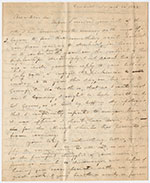 Heman Humphrey's Letter to Edwarwd Hitchcock, August 20, 1825
Heman Humphrey's Letter to Edwarwd Hitchcock, August 20, 1825
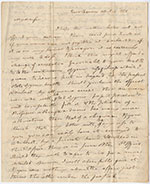 Benjamin Silliman's Letter to Edward Hitchcock, April 4, 1825
Benjamin Silliman's Letter to Edward Hitchcock, April 4, 1825
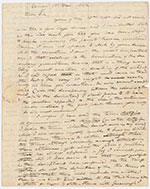 Edward Hitchcock's Letter to Benjamin Silliman, December 1, 1822
Edward Hitchcock's Letter to Benjamin Silliman, December 1, 1822
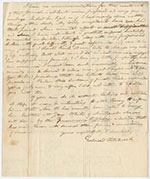 Edward Hitchcock's Letter to Benjamin Silliman March[?] 1825
Edward Hitchcock's Letter to Benjamin Silliman March[?] 1825
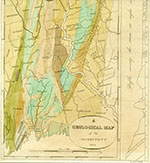 1822 Map in the American Journal of Science, Orra White Hitchcock
1822 Map in the American Journal of Science, Orra White Hitchcock
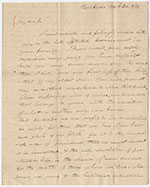 Benjamin Silliman's Letter to Edward Hitchcock, March 20, 1824
Benjamin Silliman's Letter to Edward Hitchcock, March 20, 1824
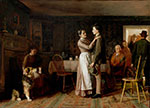 Yankee Ambition
Yankee Ambition
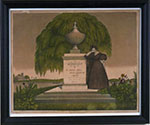 Memento Mori: Death and Loss in 19th Century New England
Memento Mori: Death and Loss in 19th Century New England